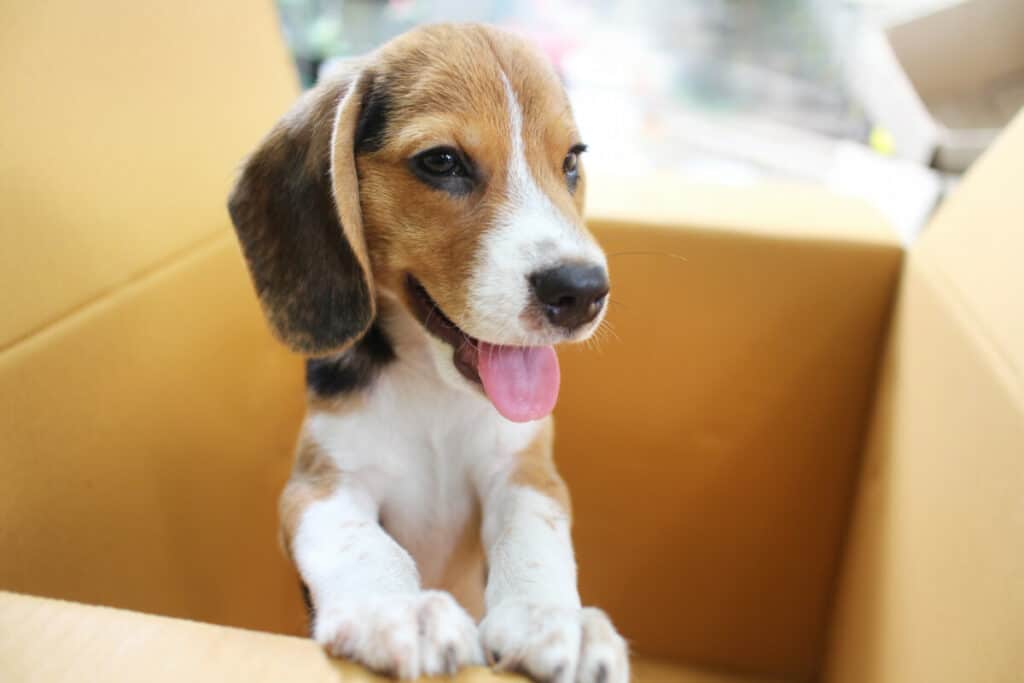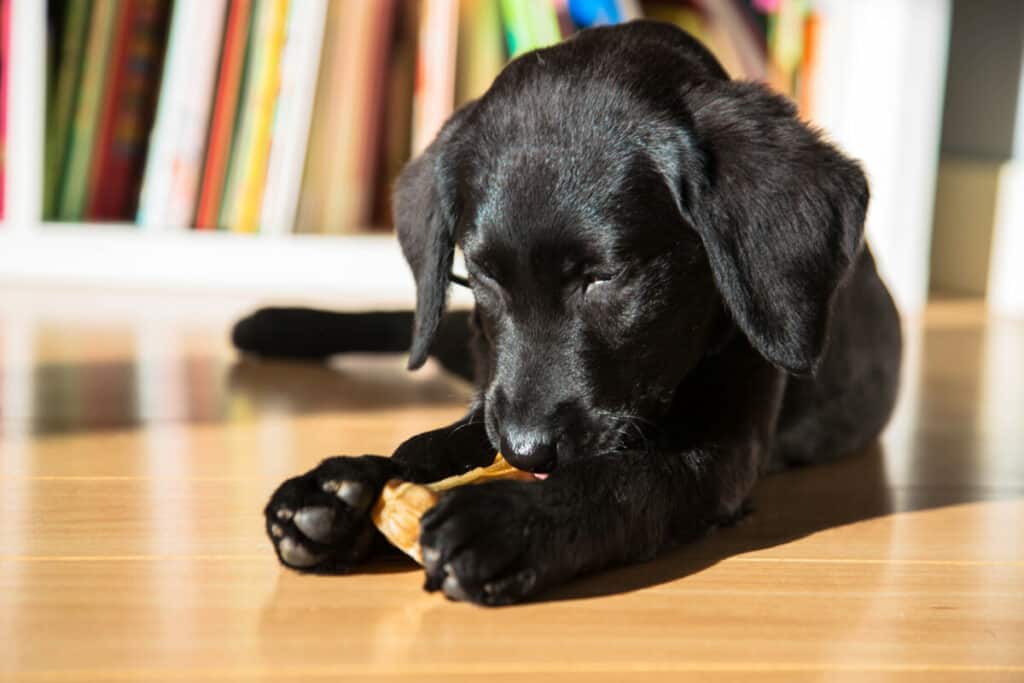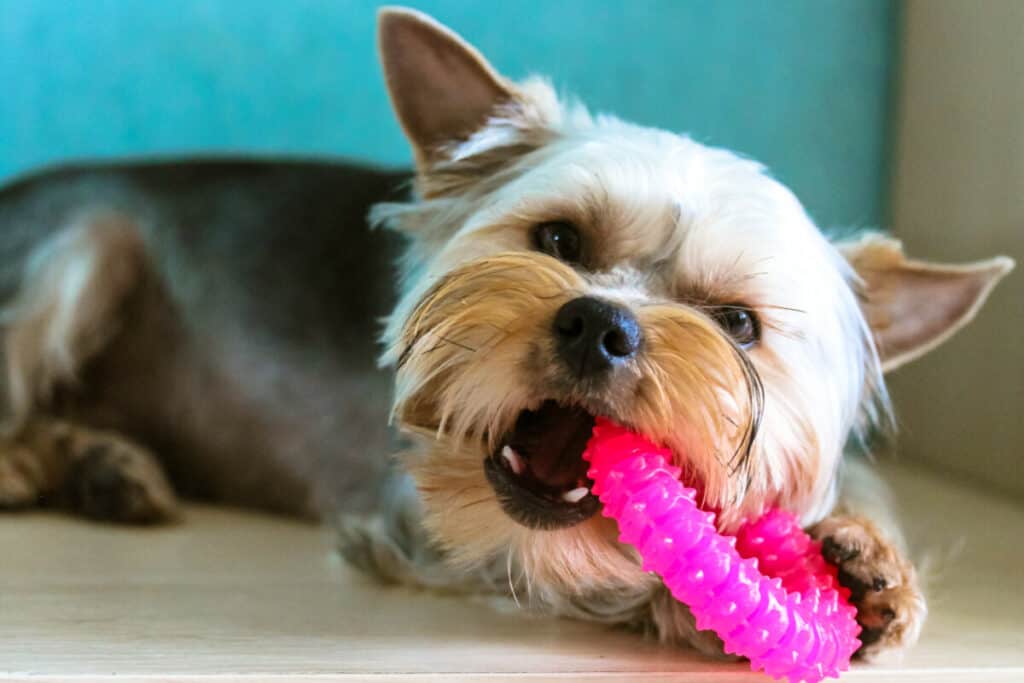
Raising dogs can be fun, but it takes all the responsibility of raising a child. Knowing what behaviors should and shouldn't concern puppy owners helps puppies receive the responsible care that they need.
Puppies can chew on cardboard. Cardboard is not toxic, it won't hurt them, and it doesn't cause sickness. Chewing on cardboard is also a good activity during teething as it helps them to learn about their environment. However, get them to stop early on to prevent bad habits of chewing later.
While carboard isn't toxic to puppies, it can be indicative of various health issues and should still be regulated. It can also lead to bad habits that should lead puppy owners to consider other creative, energy-engaging activities for their pets to enjoy.
Why is it Okay?
Chewing on cardboard is okay simply because it isn't toxic to puppies, and it doesn't have any negative effects on their teeth. In fact, especially at the puppy age, it can be an enrichment activity as puppies learn about the world around them. Teething will also be an uncomfortable period of growth, and puppies will be looking for ways to numb the pain.
Think about puppies as though they were a human baby. As babies grow, they become more mobile and curious about the world around them and their teeth. During this growth period, they will learn to chew on soft foods, and they'll probably shove an unidentified object into their mouth, that they picked up off the ground, and that their parent will spend the next 30 seconds trying to dig out. Ultimately, they'll be fine, if not a bit confused.
Puppy owners can expect the same for their small canine friends. Chewing on a bit of cardboard as their teeth come in, and maybe even swallowing a small piece or two, won't do any harm to the puppy. They're just trying to experience their environment through tastes and textures, and relieve some pressure on their growing teeth.

Can it Be a Bad Habit?
While chewing cardboard is fine, it can lead to bad habits, as well as become a health issue.
Chewing and then eating cardboard begins to become a health issue if large amounts are ingested. Because cardboard isn't digestible, it can cause an intestinal blockage, which will lead to symptoms such as appetite loss, weight loss, weakness, abdominal pain, and diarrhea.
Ingesting too much cardboard is perhaps the worst it will do to a puppy. However, other results of chewing cardboard can result in annoying behaviors for their owners.
If a puppy really loves chewing cardboard, it may start to seek out cardboard and similar items on its own. These items might be toilet paper, books, and yes, homework. Some people use cardboard boxes to store important documents which will lead to double trouble for unsupervised puppies!
As puppies find similar chewy textures around the house, the potential for them to create surprise messes will grow. In order to keep chewing cardboard from becoming a destructive habit, it will be important to regulate the activity as soon as a puppy is introduced to it.
How To Regulate Chewing on Cardboard
Firstly, knowing why puppies chew can help their owners better understand when the behavior is good and when it is getting out of hand. Chewing behavior can be caused by several different issues. At its most basic root, it may be a result of your puppy teething. Puppies may teethe from two weeks of age to eight months, at which point they should have their adult teeth. Because of this, as was mentioned earlier, chewing on cardboard may be an activity of relief or curiosity during this period of growth.

Additionally, excessive chewing in a puppy can potentially indicate a health issue known as pica, which is when pets eat or chew unconventional things. In puppies, it may look like an especially unnatural penchant for chewing—and eating—cardboard and other paper products. The behavior can be addressed by ensuring that puppies are receiving proper nutrients and exercise, or by mixing up the variety of toys and food that puppies receive.
Not all chewing behavior is meant to be interpreted as pica. As long as puppies are receiving proper care for all their health needs and display other healthy chewing behaviors, chances are that their cardboard chewing habits are not detrimental.
In order to ensure that chewing on cardboard doesn't lead to destructive habits, the best action that puppy owners can take is to regulate how often and how long puppies are allowed to chew on cardboard.
Because chewing on cardboard can lead to puppies destroying other paper products, and even books, they should be constantly supervised when gnawing on this particular toy. One pet owner stated that “I let my pup tear apart cardboard boxes… but only with my supervision.” Consistent control over the amount of freedom allotted to puppies to play with cardboard will help them to better regulate for themselves how they interact with cardboard.
If puppies begin to seek out cardboard on their own, their owners can take the opportunity to remove the unregulated item and redirect them to a variety of toys to chew on, such as bones, balls, or a noise-making toy. Playing with puppies will also focus their energy on the toy being used, and create fun memories at the same time!

Another solution may be the simple fix of getting them a meal. Slow feeders for puppies can help them to get proper nutrients, as well as chewing stimulation from slower eating. Introducing a variety of slow feeders can help stimulate a growing puppy's mind, allowing them to divert their focus from cardboard.
Lastly, if regulating their interactions with cardboard isn't doing enough to keep them from seeking it out on their own, then puppy owners may need to puppy-proof the house by keeping cardboard and similar items out of the reach of their pets. This may look like reorganizing bookshelves, moving tissue boxes onto high shelves, keeping important documents secure, closing bathroom doors, and either using a more secure disposal for recyclables or moving them to the garage.
All in all, if a puppy is just enjoying a moment to gnaw on the corner of a box, there isn't anything to worry about. Let them explore the world around them and see what else they might discover!

Cindy is a prolific writer and online researcher who can't imagine life without dogs. There is scarcely a dog topic she has not researched or written about. Her love for dogs and helping dog parents is evident by the thousands of dogtemperament.com visitors who read her articles monthly. Most of all, each topic Cindy writes on helps forge a stronger bond and understanding between her and her happy Catahoula Leopard Dog Jossie.